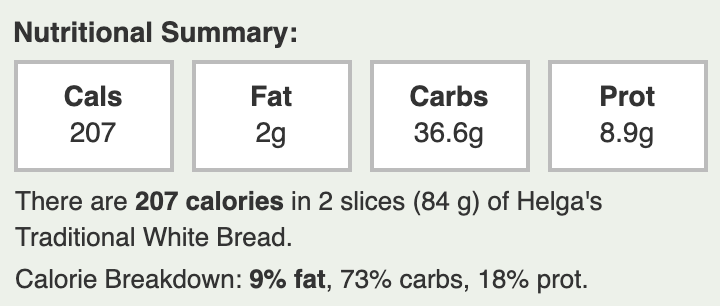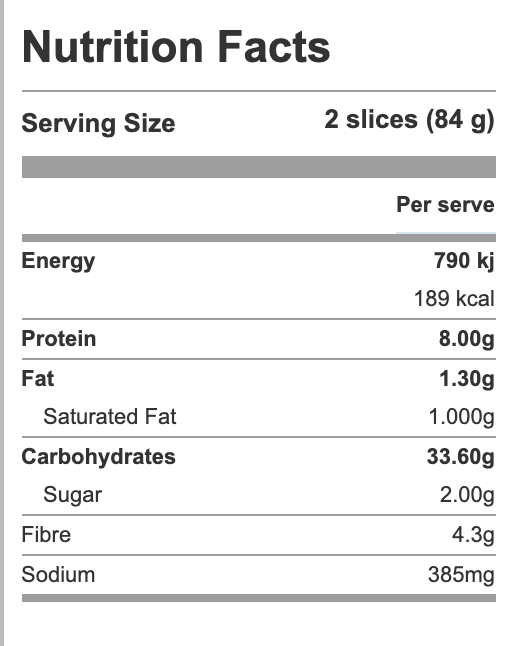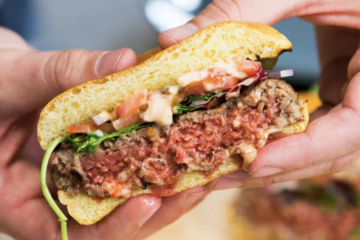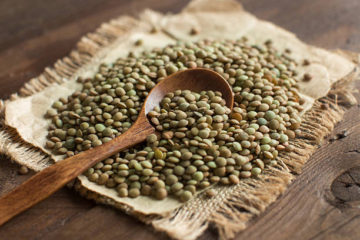There is a widespread belief today that bread is what is making the world overweight. That it is a major obesity culprit.
This does not account for the fact that people are eating less of it, even the healthier artisanal types.
People say bread has ‘carbs’ (the apparent cause of obesity), it has gluten (even worse – how can anyone who cares about their health eat THAT?), that it’s got sugar in it and not much protein to keep you satiated. That it’s just a really bad food if you want to lose weight or be healthy.
Just how much bread are we now eating?
Our current Australian dietary guidelines indicate that we “consume less than half the recommended quantity of whole-grain foods. On the other hand, we eat too many refined-grain foods” (that is white bread, baked items & processed breakfast cereals).
As a nutritionist, I will go so far as to say that CARBS ARE GOOD.
Women who restrict them too much usually develop hormonal problems. Men who restrict them too much usually develop vitamin deficiencies & lack energy. Bread is not the only source of carbohydrates – all plant foods have them, but bread is an easy way to get lots of them.
And if you eat healthy varieties of bread (wholegrain types) you get a whole slew of useful energy-creating vitamins.
Bread’s just a really easy way to get them in – and it tastes great too!
In the 2019 financial year, it was estimated that Australians consumed on average 1.78 serves of bread per day, which was the highest intake of food in the grain and cereal category. That year, it was estimated that Australians consumed a total on average of almost five servings of grain and cereal foods per day.
Let’s look at some of the nutritional facts about bread and see if it can, or cannot, be part of healthy weight maintenance or even a weight-loss, diet.
The Australian government guidelines
Here are the daily recommendations for all cereal grains (which includes bread):
| Children 2 – 8yrs | 4 serves/day |
| up to late teens | 7 serves/day |
| men & women under 50 | 6 serves/day |
| women 50 – 70 | 4 serves/day |
| men 50 – 70 | 6 serves/day |
| men over 70 | 4 ½ serves/day |
| women over 70 | 3 serves/day |
| pregnant/b’feeding women | up to 8 ½ serves/day |
Please note two things about these seemingly high serving amounts:
- Cereal serving recommendations are much smaller than most people think, judging from portion sizes I see on plates at restaurants and amounts people typically serve themselves.
- This table is assuming a normal weight person maintaining weight.
- This table does not take into account people’s differing activity levels, except to indicate that over 70 year olds will tend to be more sedentary so should be eating fewer cereal grains. As we know, people in the other age groups also have differing activity levels and that should be taken into account also.
What is a serve of bread and cereal grains?
1 serve =
- 1 slice bread (40g)
- ½ bread roll or flat bread (in other words, 1 kebab = 2 serves of flat bread)
- ½ cup of cooked rice, pasta, bulgur, polenta, quinoa, noodles (think of your last pasta meal…maybe 4 – 6 serves? Or more?)
- ½ cup cooked porridge (120g.) – How many serves would you usually eat?
- ⅔ cup of cereal flakes (eg. processed breakfast cereals)
- ¼ cup muesli (huh! Who eats that little?)
- 3 crisp breads (eg. Vitaweats)
- 1 crumpet
- 1 small English muffin or scone
It’s easy to see how those dietary guidelines can be reached and exceeded – and yet, as statistics are showing, Australians are generally eating less than half the guidelines now. The obesity epidemic, however, is showing no signs of slowing at all.
Starchy carbohydrates for humans?
The popularly held notion today is that carbohydrates, including bread, are fattening and you need to cut them dramatically to lose weight and be healthy. This idea is associated with the very low carb and keto diets that have seen a rise in popularity in recent years. These diets usually see rapid weight loss in the early stages (you can read the reasons for this <here>), which evens out over time.
For long term weight loss there’s nothing to be gained weight-wise (read more <here>), and much to be lost healthwise (read more <here>).
Traditionally, starchy carbohydrates, of which bread is one, have been the mainstays of the diets of large civilisations of lean, strong people around the world. To the point that Dr John McDougall calls the human species, “starchivores” – a species actually designed to thrive on mostly starchy foods.
Wheat, rye, barley, potatoes, quinoa, corn/maize, pumpkins, taro, yams, lentils, beans and rice have fed the vast majority of humankind almost exclusively for thousands of years, with the addition of some vegetables, and meat when available.
“Bread of life” is actually what people have thought for ages past. Until the last decade or two when we clearly came to know better!
Starches are great sources of energy. If you are active most of the day, you will benefit a lot from starchy foods.
Do starchy carbs make you fat?
It does not seem that eating starchy carbohydrates, including bread, made people fat in history.
And today, guidelines from suitably qualified professionals looking at the clear evidence available, agree. And selecting whole-grain version is by far the best. White versions have a lot of calories which convert to energy, but whole meal/ whole grain versions have the energy factor as well as fibre, vitamins and minerals and more protein.
Here are two nutrition profiles of a popular Australian bread brand, Helga’s – both white and wholemeal:
Australians consume less than 1/10th of their daily calories as bread. Bread has fewer calories per slice (about 75 calories) than an apple!
All that fibre
The king of nutrients in bread is FIBRE. Vital for gut health, brain health and weight management, wholemeal versions contain about 2g. fibre per slice. People who eat whole-grain bread have a much higher diversity of healthy gut microbes.
Whole grain (unrefined) bread contains several B-vitamins. These are needed for our cells to create energy and for neural (nerve) health. That means they help with good mental health.
All these benefits are only in wholemeal bread. The first ingredient on the nutrition label must say “wholemeal” or “wholewheat flour” – not wheat flour, which is just white flour.
Try heavy, ‘sprouted grain’ bread, wholemeal sourdough and grainy breads. For white bread die-hards, ‘Wholemeal Wonderbread’ will give you more fibre, but still look white.
Gluten issues?
75 – 85% of the protein in wheat and rye bread is gluten.
Bread proteins, gluten and gliadin, create a stretchy net when water is added, capturing carbon dioxide bubbles. These cause the bread to rise and be light and chewy.
1-2% of people have medical conditions affected by gluten – this is called coeliac disease, and is diagnosed by a blood test looking for specific autoimmune antibodies, as well as with an internal endoscopy, looking for damage to villi lining the intestinal walls. Such people must avoid gluten-containing foods for their whole lives.
This condition is becoming more prevalent in the Western world, even though people are eating less bread (our main gluten source). As a nutritionist, I suspect this is because of diminishing gut health throughout the population, caused by both excessive medical drug use combined with poor, processed food heavy, diets.
Most people outgrow wheat allergies by age 6. Some people have non-coeliac gluten sensitivity, indicating gut problems.
Avoiding or limiting gluten products may alleviate symptoms of thyroid disease, autoimmune conditions or mood disorders, because of their link to poor digestion. I would prefer to limit gluten for a time, and meanwhile work on restoring gut health, and then reintroduce gluten, since gluten-containing grains are a great source of nutrients and a convenient source of healthy calories.
Two slices of bread contain between 8-9g. of protein.
Sourdough bread reduces gluten by up to 97%.
If you have to avoid gluten-containing grains for a health reason, you’ll have to focus on getting all those vitamins, fibre and starches from somewhere else.
Those for whom bread may become a problem
Elderly folk can fall into problems with bread. Those for whom cooking has become a chore can subsist for a long time on “tea and toast” diets. Eventually, however, nutrient deficiencies can take their toll.
If you have elderly parents for whom this may be a problem, try to get them onto healthy wholemeal varieties of bread. You could also provide simple sources of frozen and microwaveable vegetables to add to dinners, as well as fruit for them to snack on during the day.







0 Comments